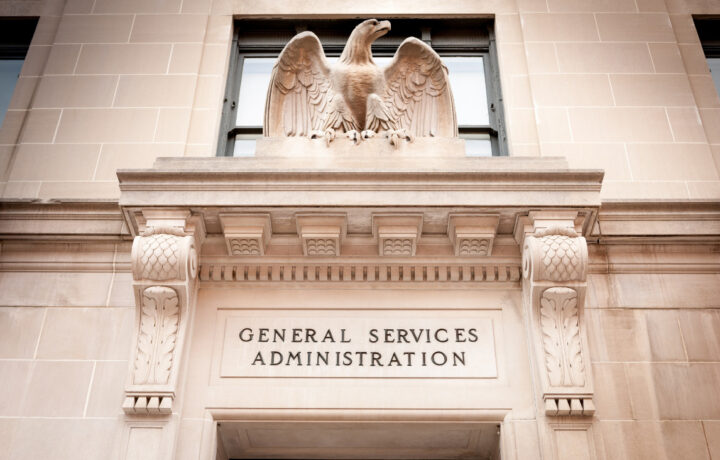The President’s Executive Order, “Eliminating Waste and Saving Taxpayer Dollars by Consolidating Procurement,” was issued March 20. Its primary purpose is to consolidate common goods and services contracting back under the General Services Administration (GSA), where it originally resided when it was first established in 1949.
Over time, many contracting services were decentralized and relegated to individual agencies and sub-components, often time to fast-track acquisitions. The EO states, “This resulted in the large-scale duplication of contracting services, leading to increased costs across the government.”
Potential Savings
Each year, the federal government’s executive branch spends approximately $490 billion on Federal contracts for everyday goods and services, making our government the largest purchaser of these products and services in the world.
Savings can be realized by consolidating Federal purchases and through negotiations for lower costs, which are made possible by the larger contract volumes.
Consolidating domestic federal procurement within the GSA can eliminate waste and duplication of services while allowing agencies to focus on their core mission of serving the American people.
Contracting Functions
This action does not eliminate essential contracting functions from the executive departments. It enables departments, agencies, and subgroups to focus on mission-oriented responsibilities as outlined below.
The majority of departments and their associated agencies employ field logistics specialists who are often delegated limited contracting authority. They typically handle and manage specialized acquisitions, organization-specific contracts, field facility construction and repair bids, unique real estate leasing needs, and service contracts for various tasks. They also arrange for elevator and grounds maintenance, transportation needs, government shipments, and Inventory Control of property and equipment, among other tasks.
Implementation Consolidation TimeLine
The GSA must formulate plans to facilitate contracting consolidations for common goods and services within the executive branch to the extent permitted by law and as excerpted from the EO as noted below:
- Within 14 days of the date of this order, the Director of OMB shall issue a memorandum to agencies implementing step (2).
- Within 30 days of the date of this order, pursuant to the authority in 40 U.S.C. 11302(e), the Director of the Office of Management and Budget (OMB) shall designate an Administrator to act as the executive agent for all Government-wide acquisition contracts for information technology.
- The Administrator, in consultation with the Director of OMB, shall defer or decline the executive agent designation for Government-wide acquisition contracts for information technology when necessary to ensure continuity of service or as otherwise appropriate.
- The Administrator shall, on an ongoing basis and consistent with applicable law, further rationalize Government-wide indefinite delivery contract vehicles for information technology across agencies, including as part of identifying and eliminating contract duplication, redundancy, and other inefficiencies.
- Within 60 days of the date of this order, agency heads shall, in consultation with the agency’s senior procurement officials, submit to the Administrator proposals, pursuant to 40 U.S.C. 101, 40 U.S.C. 501, or other relevant authorities, to have the General Services Administration conduct domestic procurement with respect to common goods and services for the agency, where permitted by law.
- Within 90 days of the date of this order, the Administrator shall submit a comprehensive plan to the Director of OMB for the General Services Administration to procure common goods and services across the domestic components of the Government, where permitted by law.
The Changing GSA
The GSA has a complex mission, providing centralized procurement for the federal government. It offers products, services, and facilities that federal agencies need to serve the public. Their mission will be expanded to streamline procurement segments across the entire federal government.
This directive refers to delivery contract vehicles, and they are essentially specific methods used by government agencies to purchase services and goods from outside suppliers or contractors. These vehicles streamline the acquisition process, improving efficiency, enhancing competitiveness, and ensuring compliance with applicable regulations.
GSA’s acquisition services currently provide the following:
- Cost-effective, high-quality products and services from commercial vendors
- Assist federal agencies in building and acquiring office space, products, and other workspace services
- Oversee the preservation of historic federal properties.
- Provide policies covering travel, property, and management practices
- Provide tools, equipment, and non-tactical vehicles to the U.S. military
- Assist state and local governments with law enforcement, firefighting, and rescue equipment
- Disaster recovery products and services
The designated Administrator must present a comprehensive plan, as outlined in item 4 above, by June 19, 2025, to implement this change throughout the executive branch to the extent possible. This plan will require considerable coordination among all Federal departments to transfer common goods and services procurement to the GSA.
This won’t happen overnight, and it is reasonable to expect that this transition will take time to implement fully without negatively disrupting agency operations.




